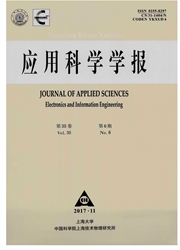

 中文摘要:
中文摘要:
基于湿纸码"不依靠载体元素本身传递信息"的特性,提出一种新的以图像位平面为载体的湿纸码自适应信息隐藏算法(wet papercode adaptive steganography,WPCAS).通过研究图像中载密位平面小块复杂性的统计特性,建立了符合人眼视觉遮蔽效应的自适应选择规则.使用该选择规则能精确分割位平面的类噪声区和平滑区,将秘密数据隐藏在视觉隐蔽性好的位平面类噪声区,从而增强了秘密信息的不可觉察性.同时,采用湿纸码使该方法的选择规则和载密元素集对接收者完全透明,基于规则的攻击对WPCAS完全失效,因而抗攻击性能得以提高.与经典位平面复杂度分割(bit-plane complexity segmentation,BPCS)以及基于BPCS的改进算法的比较实验表明,WPCAS在增人嵌入容量、改善载密图像质量以及提高信息隐藏安全性方面具有优势.
 英文摘要:
英文摘要:
We present a new scheme termed wet paper code adaptive steganography(WPCAS).Using the wet paper code,the receiver can recover the secrete message correctly without knowing the elements used to carry secrete bits.This gives the sender complete freedom to choose the collection of elements as message carrier. With this advantage,the new scheme builds a proper adaptive rule(AR) which can automatically adjust its parameters to make the collection of message carrying elements better match the noise-like region of bit-plane so that visual imperceptibility is enhanced.The fact that the AR is unknown to anyone except the sender prevents analyzers from launching AR-based attacks,making the new scheme more security.Comparison between the WPCAS scheme and the adaptive BPCS steganography show that the proposed WPCAS is better in terms of visual imperceptibility and resistance against steganalysis based on statistics of complexity.
 同期刊论文项目
同期刊论文项目
 同项目期刊论文
同项目期刊论文
 期刊信息
期刊信息
